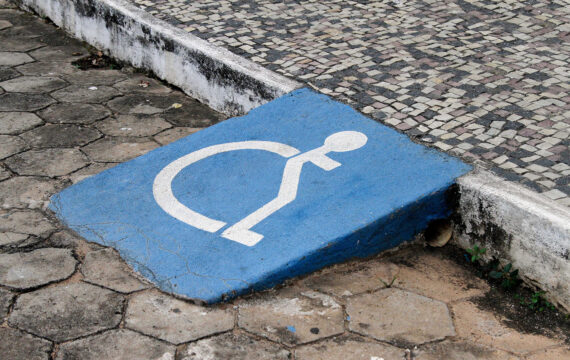Just a year ago, walking the streets of our cities or taking a plane on a business trip, very few of us could really appreciate the meaning of the purported Chinese curse: “May you live in unusual times.” The beginning of the year 2020 brought so much radical change to our lives that many see our merry existence before COVID-19 as a dream we’ve just awoken from. The future is vague and holds a lot more uncertainties than it used to.
According to an MIT survey, up to a half of American employees are working remotely these days. The #stayathome lifestyle is steering consumer behavior toward shopping and ordering food online, subscribing to multiple streaming services, and generally replacing habitual offline shopping spots with the virtual equivalent. Many experts and major employers believe that these practices are likely to stay after the pandemic is over, so the quality of online services is due to change drastically, and human-centered design and engineering will play a major role in this process.
Businesses will quickly come to realize that сontinuous investment in UX improvements must be the cardinal mantra of any online store or platform aiming for user retention and growth.
In this article, we take a look at how a human-centered design approach can yield tangible benefits for digital product developers and their users.
Challenges for businesses and users alike
The coronavirus pandemic has had an unprecedented, adverse effect on businesses around the world. Some industries that operate primarily in the physical world are suffering colossal financial damages and are seeking recourse from governments and industrial associations. Even those that operate partly or exclusively online are scrambling to change and adapt to the new reality.
Those who had been considering digital transformation before the pandemic are now seeing it as a catalyst to their postponed or partially fulfilled plans. Any digital transformation is a long and iterative process and companies that succeed in embracing it as their standard modus operandi are likely to be much better prepared for the future. And if this transformation is accompanied by a strong focus on human-centered design rather than one prioritizing a product or technology, it will provide the business with a solid foundation for long-term prosperity and success.
According to experts, some trends are much better positioned to thrive in the age of self-isolation and social distancing. Some examples are:
- virtual events hosting thousands of online users
- telecommuting tools that replace on-site workshops and office sync-up meetings
- contactless food delivery
- heavy use of various cloud tools and services.
Each of these activities is meant to deliver an experience that is supposed to be functionally and emotionally tantamount (or better!) to their conventional, pre-pandemic analogs. After all, it’s a proven fact that people work best using tools that they are already familiar with. This alone makes a human-centered design approach especially vital for keeping users happy and productive in the era of remote work and social distancing.
Human-oriented design as a guiding principle

When we talk about human-centered product design, we shouldn’t restrict ourselves solely to its UI aspect. On the contrary, human-centered design (HCD) is a much broader term underlying the ISO 9241-210 standard. HCD is based on six key principles:
- Design should be based on a clear definition of users, their tasks, and their context. It is important to understand here that these definitions cannot be based on assumptions and projections coming from the marketing or design department. They need to be corroborated by research data and actual user feedback.
- End users should be involved in design and development activities and be a stakeholder, allowing you to create a product that is perfectly aligned with their needs and wants, and the designated usage context.
- The design process should rely on continuous user feedback, which helps minimize the chance of not meeting the requirements of end users and client organizations.
- Design is an iterative process and it’s always hard to say how the results of each design iteration will be perceived by stakeholders. This important aspect should be accounted for in estimates and project planning.
- UX is different from usability. Usability addresses just one aspect of the UX — the proverbial ease of use. UX, in contrast, encompasses many more nuances, such as the lack or monotonous routines, overall satisfaction with the work process and more.
- Team diversity. The broader the individual outlook of every team member, the better it is for the team as a whole. Every specialist can contribute to the result from their own professional perspective, thus making the final product more balanced.
The key takeaway from these definitions is that the general approach to designing a product or service should be deeply emphatic and tailored to the specific needs and requirements of target user cohorts or even particular industries. During the quarantine, user-friendliness and perceived care for customers’ well-being will become the primary driver of customer loyalty.
UX design in times of trouble and afterwards
With so many people effectively grounded at home, software applications and websites are fast becoming their new window to the outside world. Some of them fulfill purely practical tasks, while others are designed to entertain and boost morale during self-isolation. In any case, people rely on their favorite apps and websites to get the most up-to-date information about their neighborhood and the world, consume entertainment content, and order products and services. Usability or functionality issues will become an instant turn-off for people who are likely to be already stressed and distraught.
One of the biggest trends during the pandemic is the growing use of smartphones. Up to 80% of urban users access online content from their mobile phones, which highlights the importance of optimizing and enhancing apps from the HCD perspective. This may include:
- shortened user flows
- saved searches
- quick re-orders
- timely notifications about product availability
- tighter integration with delivery services
- layout optimization for mobile devices
- fewer ads and large images, and more CTAs leading to order pages.

Source: GlobalWebIndex
Besides the purely technical means of improving the UX of your apps and websites, there are other ways of boosting customer loyalty during the pandemic:
- By posting regular updates on the company’s efforts to keep the business running during the pandemic
- By focusing your marketing efforts on social networks, where users spend more time than in their email inboxes
- By demonstrating the company’s commitment to live up to its high standards of social responsibility
- By revising the pricing policy, extending trial periods, and expanding the scope of features available during trial periods
The bottom line is: the guiding principle of designing software products, their interfaces, and entire business models will no longer be technology-centric, as we’ve seen multiple times in the past, but primarily human- and user-centric.
The IT business perspective
The COVID-19 pandemic might just be the worst crisis the world has faced since World War II. However, history shows us that crises often revive entire industries and stimulate innovations. In a similar fashion, the crisis of 2020 may also make us rethink our familiar practices and review our priorities. As humanity unites in the face of this global threat, the approach to meeting the needs of individual consumers must become a lot more personalized, emphatic, and focused. Businesses that want to survive and prosper in the future must take advantage of this unexpectedly positive effect of a forced change.
Human-centered design companies are likely to be the drivers of a massive digital transformation trend that will engulf even conservative companies, where novel approaches to getting things done are traditionally frowned upon. After all, the speed of evolution has always been the highest in the times of great peril. Let’s hope that once we have won the battle against COVID-19, we will see human-centered design and engineering practices as a norm for building just about everything around us.
Interested in a wider perspective on UX and the ways it can breathe new life into your business? Contact Intellias to start talking with our team of UI/UX experts.

